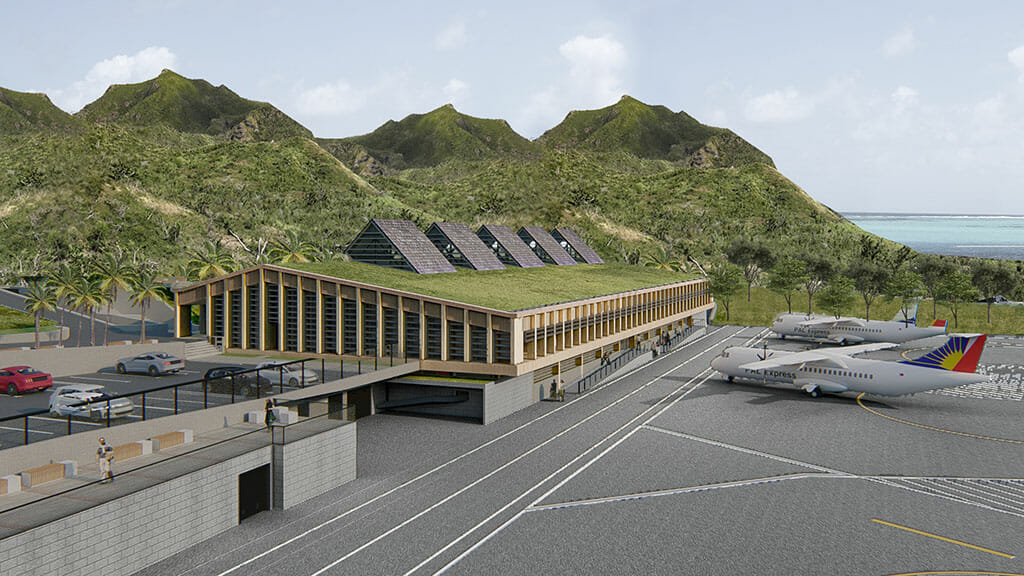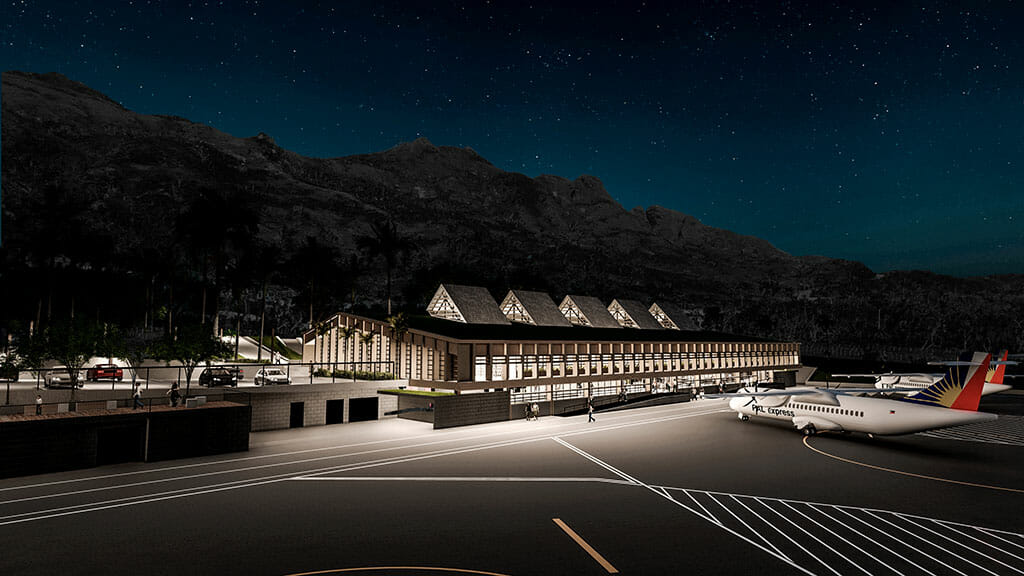In the early morning between Nov 16 and 17 2020, hurricane Lota, a high-level category 4 atmospheric depression with winds of up to 250 km/h hit hard on the central Caribbean. One of the places that suffered the consequences of Lota was Providencia, a tiny island of just 17 km2, belonging to the Colombian department of San Andrés, Providencia and Santa Catalina.
Here’s the story of an exemplary and successful project in a Caribbean airport that presented a huge challenge due to its singularity, isolated location and risks associated with the climate.
As described in written eye witness accounts, “… the small island was practically erased from the map; 98% of constructions were destroyed or seriously affected, leaving approximately 5,000 raizal inhabitants of Providencia homeless. Almost miraculously, there was only one casualty, as well as tenths of injured people with varying degrees of injuries. However, the landscape of the island once the hurricane had passed, was of absolute devastation”.
The main point of entry and exit to and from Providencia island is its small airport, called El Embrujo, which had also violently suffered when the hurricane struck. Operators managed to clear the runway in the hours following the hurricane, a paved surface of just 1,290 meters in length. However, the Passenger terminal as well as the control tower were completely destroyed.
Just 3 months after the tragic event, in January 2021 we received the invitation from Aeronáutica Civil de Colombia to bid for the design and reconstruction of the El Embrujo terminal and all of its adjacent zones. Additionally, the potential contract included a significant expansion of the aircraft parking platform.
To effect the order, our company had to guarantee 3 essential aspects for Aerocivil:
- Design the new airport following the usual IATA standards for an optimal and adequate level of service given the growing passenger traffic in the island.
- The new infrastructure had to be operational within a year and its design had to consider the remote location of Providencia, considering the logistical challenges – in terms of construction and maintenance – that this entailed.
- Finally, the resulting infrastructure had to be able to withstand the arrival of new episodes of hurricane-force winds. This circumstance was of paramount importance since, unfortunately, there was no doubt that at some point in the future a “new Lota” would hit the island again.
Once the agreement was closed and from the beginning of the works, it was clear that a new condition had to be added to these initial requirements, which was essential for both the design team and our client: the final result had to respect the unique raizal or original architecture of the island. A very particular way of building and understanding the spaces in that place, which is the result of an extreme climate in terms of precipitation, humidity and exposure to solar radiation.
To meet all these conditions, AERTEC coupled its own team of experts with the on-site experience of Cali studio “Espacio Colectivo”, a regular collaborator of our company for projects in Colombia. Together with them and through targeted decision-making around crucial aspects of the design, the end result satisfied all these conditions. Let’s see how.
First, after collecting the essential data, both on the state of the airport prior to the hurricane and on the movement of passengers and aircraft, the team calculated and sized all the systems affected by the project: from the vehicle parking area in the land side development, through all the processes related to the passenger terminal, and up to the layout and geometry of the 3 platform stands required by Aerocivil.

Once laid out in a simple manner, prioritizing the function of each one of them and having adapted to certain particular aspects of the island’s mode of operation, all airport processes were organized in a passenger terminal arranged in two levels. This allowed linking the land side with the air side platform, located approximately 7 meters lower.
This is how the floor plan of the passenger terminal was ultimately defined.
Second, a unique geometry was devised through various climate models that considered solar exposure and the direction of the prevailing winds; this, in addition to formalizing the exterior appearance of the terminal, favored interior comfort through the use of natural ventilation.
Furthermore, this geometry would help dissipate the effect of eventual hurricane winds on the building itself.

To materialize the construction project, and due to the difficulty of carrying out a “traditional” execution project in such a remote location, a system of metal trusses was devised – all being the same – the dismantling of which could favor transportation by boat to Providencia and subsequent execution, similar to a Lego set.
A vegetal cover was projected over this structural system whose purpose was twofold:
- On the one hand, create a heavy structural element, unalterable by the passage of a new hurricane. This characteristic, together with the particular geometry of the roof that features a system of skylights that “break” its flatness, guarantees its good behavior in such situations.
- And on the other hand, provide the terminal roof with a certain thermal inertia, so that the transfer of heat from the outside and into the building would be as great as possible. A vegetal layer cover 25 centimeters thick is ideal for this.
All of the above determined the section of the new terminal at El Embrujo.
Third, the design team analyzed the most significant elements of Raizal architecture. Excessively inclined roofs (to evacuate rain), lattices and overhangs over the façade openings (to protect from the scorching Caribbean sun) and wide entrance halls to the buildings (seeking to acclimatize the transition from the inside to the outside and vice versa). And this with the purpose of reinterpreting these elements and adapting them to the design of a public building that must become, not only the most important transport terminal on the island, but also a true logistics and shelter in the event of a climate disaster.
The image of the terminal is ultimately defined by this transformation of raizal architecture.
Lastly, from the very genesis of the project the intention was to minimize the “technical” equipment of the terminal as much as possible, beyond that of the processes associated with airport operations. This reduces the need for equipment maintenance in such a remote area.

The end result is a modern passenger terminal, open to the eastern coast of the island of Providencia in search of cool air from the sea and integrated into a singular environment proud of an extreme and unique way of life. A form of raizal-airport relationship that led us to design a public space associated with the terminal as the priority element of the complex in addition to a lookout from which to contemplate, in addition to the gorgeous surroundings, the growing operations of the airport. The social impact of an intervention of this magnitude is equally decisive.
This is how the entire philosophy of the project was defined.


